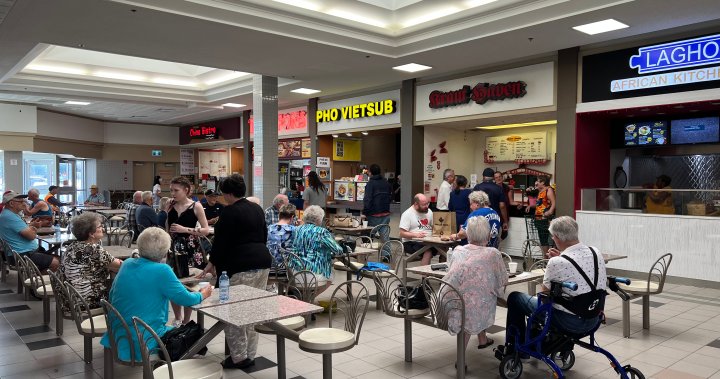The retail landscape has undergone a seismic shift, driven by the meteoric rise of online shopping. E-commerce giants like Amazon have redefined consumer behavior, forcing traditional brick-and-mortar stores to adapt or perish. Experts estimate that a significant portion of North American shopping, between 15% and 20%, now occurs online. This dramatic shift has prompted industry analysts to declare the death of traditional retail, heralding the era of online dominance. However, contrary to predictions of widespread mall closures, small and mid-market shopping centers are demonstrating remarkable resilience by reinventing themselves as community hubs. Rather than solely focusing on retail shopping, these malls are diversifying their offerings to include entertainment, services, and community events, creating a more holistic and engaging experience for visitors.
This transformation is exemplified by malls like Victoria Square in Regina, which has incorporated an arcade, mini-golf course, and a locally-focused food court. This strategy acknowledges the changing needs of consumers, who now seek more than just a transactional shopping experience. Malls are recognizing the importance of providing experiential reasons to visit, offering activities and services that cannot be replicated online. Similarly, Southland Mall has integrated non-traditional tenants such as a library, a movie theater, and even a car dealership, further blurring the lines between traditional retail space and community center. This diversification aims to draw a wider range of visitors, catering to various interests and needs beyond shopping.
The shift towards a community-centric approach is driven by the understanding that consumers crave more than just product acquisition. They seek social interaction, entertainment, and convenience, all within a single destination. Northgate Mall owner Mitchell Cohen emphasizes this point, stating that malls need to provide experiential reasons for consumers to visit, acknowledging the ease of online shopping for goods like clothing, sporting goods, and electronics. By offering diverse services and activities, malls are transforming themselves into destinations that cater to a wider range of consumer needs, creating an environment where people can shop, socialize, and access essential services all in one place.
The results of this strategic shift are proving to be highly successful. Victoria Square Mall, for instance, reports record traffic counts, exceeding pre-pandemic levels. This success demonstrates the effectiveness of the community hub approach in attracting and retaining visitors. Similarly, Confederation Mall in Saskatoon has embraced this model by launching a popular kids club, attracting hundreds of children to the mall. This initiative, along with pop-up markets and an expanding range of services, is boosting foot traffic and creating a vibrant atmosphere. These malls are demonstrating that by focusing on community engagement, they can not only survive but thrive in the face of online competition.
The emphasis on community engagement underscores the understanding that malls need to become more than just shopping destinations. They are evolving into social spaces that foster interaction and offer a sense of belonging. Confederation Mall’s property manager, Brooke Lang, acknowledges the difficulty of competing with the convenience of online shopping. However, by focusing on community-oriented initiatives and diversifying offerings, malls are striving to create a unique and compelling experience that draws consumers away from their screens and into a physical space.
In conclusion, while the rise of e-commerce has undeniably disrupted the retail landscape, malls are demonstrating remarkable adaptability. By embracing a community-centric approach, incorporating entertainment, services, and community events, they are successfully reinventing themselves. This transformation not only counters the threat of online shopping but also strengthens the role of the mall as a vital community hub, a place where people can connect, engage, and experience more than just retail therapy. The success of these redefined malls demonstrates that the future of retail lies not in simply selling products, but in creating dynamic, engaging spaces that cater to the evolving needs and desires of the community.

